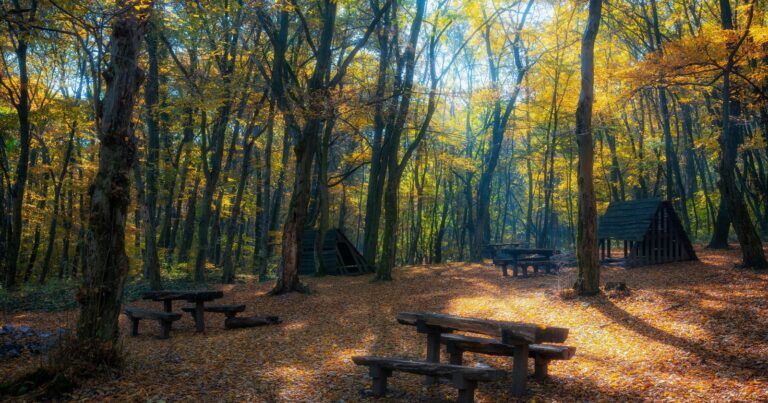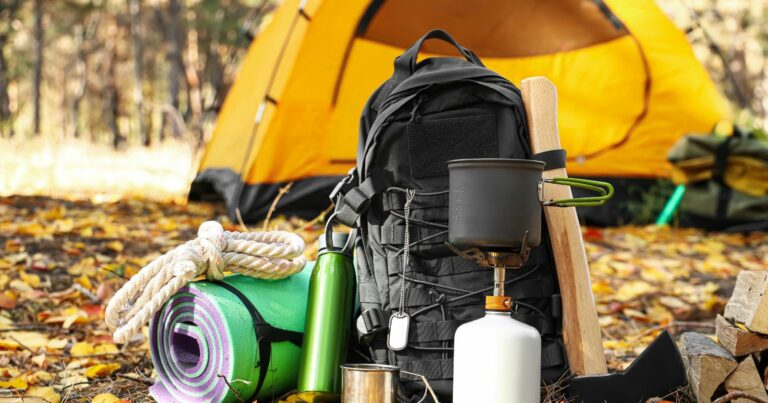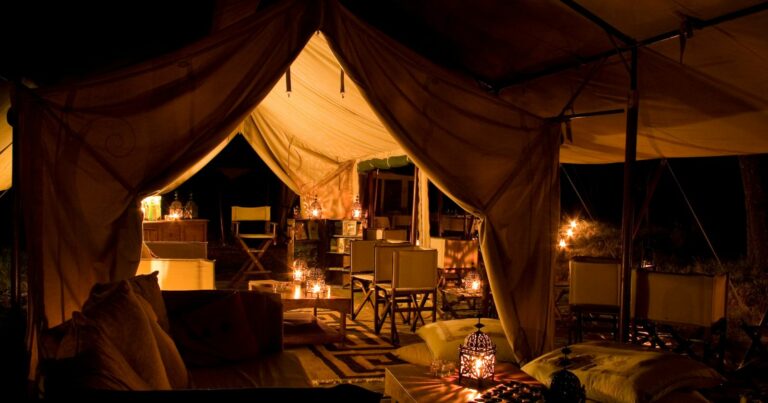Hooking Up Your RV Has Never Been Easier
Have you ever shown up to a campsite ready to relax in your RV, only to struggle figuring out how to connect everything? Properly hooking up your RV can be confusing if you’ve never done it before. But having the right amenities will make your camping trip infinitely more comfortable and convenient.
In this article, we’ll walk through exactly how to connect your RV to the various hookups at a campsite. We’ll cover electricity, water, sewer, cable TV, and WiFi. Follow these simple steps and you’ll be set up at your campsite in no time. Knowing how to hook everything up properly will give you confidence as you pull into your campsite and get ready to unwind.
Hooking up your RV starts with the power source. Almost all campsites have an electrical box called a power pedestal, which contains different amperage options like 30 amp or 50 amp. Your RV will have a power cord that you connect to the appropriate outlet on the pedestal based on your RV’s electrical needs. This provides all the power your RV requires for lights, appliances, and more.
Next comes the water hookup, which is typically a spigot or hydrant. Securely connect your RV’s drinking water hose to this water source. Make sure it’s tightened properly so you don’t spring a leak! Inside your RV, switch the water supply from your onboard fresh water tank over to use the water now coming from the campsite hookup.
For drainage, locate the sewer hookup connection point and securely attach your RV’s sewer hose using the right fittings. Support the hose so waste can drain properly, and open your black and gray water tank valves so the waste flows out.
Finally, if cable TV or WiFi is offered, connect your RV’s coaxial cable to the campsite’s cable hookup. For WiFi, follow their instructions to log your devices into the network.
Connecting your RV properly is important for functionality and convenience. Follow campsite and RV manual directions closely. Now you can confidently hook up your home-on-wheels and enjoy your camping trip!
Powering Up Your RV
Having sufficient power at your campsite is critical for running all of your RV’s lights, appliances, and onboard electronics. Here’s how to plug into campsite electricity:
- Use the power cord – Your RV will have a thick, durable power cord to connect to external electricity sources. Depending on cord length, you may need an extension cord.
- Check the amperage – Most campsite power pedestals offer a choice of 30 amp or 50 amp service. Select the outlet that matches your RV’s electrical needs. This info is in your RV’s manual.
- Align the prongs correctly – Insert the plug so the prongs on the cord properly align with the outlet. Make sure the connection is tight.
- Consider a surge protector – While optional, a portable surge protector adds an extra layer of electrical fire and spike protection.
- Watch the polarity – If equipt, check that the “reverse polarity” light on your surge protector isn’t lit up. This indicates improper wiring that needs correcting.
Connecting to the campsite power source is quick and straightforward. Take the extra time to monitor your cord, verify outlet amperage, and protect against surges and improper polarity. Now you can fire up the microwave for some late-night snacks!
Quenching Your RV’s Thirst
Fresh, potable water is an essential RV necessity. Follow these guidelines for hooking up the campsite water supply:
- Attach the hose – Use a drinking water safe hose to link the campsite spigot or hydrant to your RV.
- Verify a tight seal – Snugly turn the connectors at both ends of the hose to prevent leaks. Consider using a wrench for added tightening torque.
- Watch the pressure – Turn the water supply on slowly. Ensure there are no weak points in the hose by checking for spurts. Turn off immediately if a leak is spotted.
- Use pressure regulators – Excessive water pressure can damage plumbing. A regulator at the spigot helps limit pressure entering your RV.
- Check the hose’s length – Position the hose so it has some slack and doesn’t get tugged loose when moving the RV. Avoid potential tripping hazards too.
- Rinse before drinking – Let the water flow for a bit to flush stale water from the hose. Drinking a few glasses will help remove any plastic taste.
Having access to fresh water is a must when camping. With a leak-free connection and regulated pressure, your RV water system will work reliably throughout your stay.
Handling the Wastewater Situation
Properly disposing of sink and toilet waste tank water is important for keeping things clean and odor-free. Here are some tips for hooking up your RV’s sewer hose:
- Get the right sewer hose – Use a hose specially designed for sewage, which is durable and resistant to odors and chemicals.
- Support the sewer connection – Use pre-formed supports to create a downhill slope for good waste flow. This prevents sagging and backflow.
- Affix it securely – At both ends, tighten the sewer hose fittings so there are no leaks or disconnections. Consider hose stabilizers.
- Pay attention to length – Make sure the hose is long enough to reach the sewer inlet but not so long that it kinks.
- Open the valves – Open the black (toilet) and gray (sink) valves to empty the tanks into the sewage system. Rinse with fresh water when done.
- Watch the discharge – Ensure the waste is draining fully. Immediately address any clogs or backups if detected.
- Add a screen – Place a reusable screen on the sewer inlet to keep solid objects from clogging the park’s plumbing.
Taking the time to connect your RV’s sewer parts properly lets waste water safely exit your vehicle during your stay. It’s a stinky but very necessary task!
Tuning Into Entertainment
Many campgrounds offer cable TV hookups so you can enjoy shows and programming during downtime. Here are some tips for connecting your RV:
- Locate the site’s cable input – Look for a coaxial connector box, often on the side of the power/water hookup station.
- Review park instructions – Some locations provide a physical cable you attach, while others require you bring your own coax cable.
- Connect using a coax cable – Run a high quality, thick RG-6 cable between the campsite box and the input on your RV.
- Check for interference – Ensure the cable isn’t crimped or passing too closely to other wires, as this can degrade signal quality.
- Perform a channel scan – Use your RV TV’s auto channel feature to find all available stations. Refer to the TV manual as needed.
- Consider cable splitters – Split the feed if you want to connect multiple TVs. Avoid cheap splitters, as these can degrade signal strength.
- Watch the weather – Strong winds or storms can temporarily knock out satellite reception. Be prepared with books, games and offline entertainment options.
With just a simple coaxial cable connection, you’ll have family movie nights and catch up on the news while relaxing in your home away from home.
Getting Connected with WiFi Access
It’s nice having internet access while RV camping. If WiFi is available at your campsite, here are some tips for getting connected:
- Check for campground WiFi – Many locations offer free guest WiFi. Enquire at check-in and obtain the network name and password.
- Identify the source – Campsite WiFi typically originates from the park office or a central antenna. Try parking closer for better reception.
- Connect your device – Use your smartphone, laptop, or tablet’s network settings to access the campground’s wireless network.
- Assess connection speed – Run a test to determine usable speeds. RVs far from the source may experience slower connectivity.
- Consider a range booster – If the WiFi signal is weak inside your RV, install an inexpensive range extender inside.
- Enable a mobile hotspot – If campsite WiFi is spotty, use your smartphone’s mobile signal as a hotspot for other devices.
- Understand speed restrictions – Park WiFi is shared and may slow down during high-use periods as more people hop on.
Having access to campground WiFi allows you to work remotely, stream movies, and post all your camping trip pics. Just set your expectations properly based on the location.
Follow Campsite Rules and Etiquette
In addition to properly hooking up utilities, be sure to keep campsite etiquette and rules in mind:
- Only use electrical outlets specifically designated for your site. Never plug into your neighbor’s pedestal.
- Keep water hoses neatly coiled and out of main walkways when not in use.
- Dispose of waste tanks at dump stations, not directly at site sewer inlets.
- Keep TV volume low, especially at night when neighbors are trying to sleep.
- Don’t hog available bandwidth. Avoid data-intensive streaming when park WiFi is congested.
Being considerate of other guests helps ensure the park stays clean and pleasant for everyone.
FAQs
FAQ 1: How can I tell what amperage my RV needs at the electrical hookup?
Consult your owner’s manual to determine the amperage (30 amp or 50 amp) rating for your RV. You can also check the amp rating listed on the power converter, circuit breaker, or the wire size feeding from the converter to your breaker box. Match this up to the correct outlet on the campsite power pedestal.
FAQ 2: What do I do if the campsite power goes out?
First, check to see if the campsite is experiencing a general outage due to weather or a tripped breaker. If it appears contained to your hookup, carefully inspect your power cord, box, and campsite outlet for any issues and address anything obviously wrong. You may be able to temporarily use your RV’s battery and propane until power is restored. Alert campsite staff immediately if the problem persists.
FAQ 3: Can I leave my RV hooked up to water when I’m away from the site?
In general, it’s recommended to disconnect your RV from the campsite water hookup if you will be gone for an extended period. Shut off the water and unhook the hose to prevent potential leaks or bursts that could cause serious damage in your absence. Upon returning, reconnect and check for leaks before leaving the area.
FAQ 4: How do I know which tank valve to open at the sewer hookup?
- The black tank valve is for waste from the RV toilet.
- The gray tank valve is for wastewater from sinks and showers.
- Open only one valve at a time to avoid overwhelming the sewer system.
- Always close valves and add sewer tank treatment after dumping.
FAQ 5: Should I keep my cable TV or WiFi connection on when away from my RV?
Turn these off when away for security and to conserve bandwidth. Disconnect the cable TV cord and log out of the WiFi network on your devices. You can quickly reconnect when you return to your site. Only keep essential items like heat on when you are away.
Hooking Up Is Easy with These Tips
Arriving and getting settled in at your campsite should be a fun part of RVing. By following proper utility connection techniques, operating elements safely, and staying considerate of neighbors, you’ll be set up for optimal convenience.
Use this guide anytime you need a refresher on making and verifying the vital electrical, water, sewer, cable TV and WiFi hookups that make camping comfy and enjoyable. Knowing the steps for each gives you confidence when pulling into new campsites and getting hooked up.
Now you can kick back and relish the RV lifestyle without any utility connection headaches!







